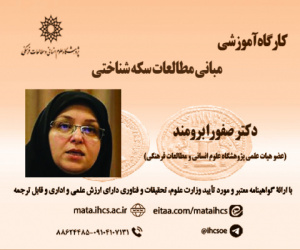رویکرد فراروش: تغییرات اقلیمی و محیط های شهری (مقاله علمی وزارت علوم)
درجه علمی: نشریه علمی (وزارت علوم)
آرشیو
چکیده
هدف و زمینه: اقلیم های شهری با تفاوت دمای هوا، رطوبت، سرعت و جهت باد و میزان بارندگی از مناطق کمتر ساخته شده متمایز می شوند. این تفاوت ها تا حد زیادی به تغییر زمین طبیعی از طریق ساخت سازه ها و سطوح مصنوعی نسبت داده می شود. هدف کلی این پژوهش بررسی محتوایی اسناد منتخب در بستر پیاز پژوهش ساندرز برای درک خلأهای مطالعاتی است. روش شناسی: پژوهش حاضر از نظر جهت گیری فلسفی عمل گرایانه، از نظر هدف کاربردی است و ازلحاظ ماهیت اکتشافی توصیفی از طریق ادغام پژوهش های مرتبط با سؤال پژوهش است که برای دستیابی به هدف خود از روش ترکیبی هم زمان و دسته بندی موضوع اقلیم در شهرها به ترکیب یافته های کیفی پژوهش های پیشین از شیوه فراروش بهره گرفته است. یافته ها: تحلیل داده های کدگذاری شده، فلسفهٔ بیشتر اثبات گرایی و ترکیبی است در تجزیه وتحلیل رویکرد تحقیق به ترتیب قیاسی و ترکیبی است. همچنین در بررسی لایه استراتژی پژوهش، بیشتر مطالعه موردی، پیمایشی و توصیفی بوده اند. نتیجه گیری: درواقع با مطالعه پژوهش های پیشین بر خلأ موضوعی مبنی بر عدم توجه به موضوعات اجتماعی و مدیریتی و همچنین خلأ در فلسفه فکری و نوع راهبرد پژوهش ها اشاره می شود؛ زیرا مسائل اقتصادی، اجتماعی، عملکردی و حتی سیما و منظر شهری از عوامل بسیار حیاتی در حوزه اقلیم شهری هستند که لازم است به همراه توسعه های نرم افزاری در حوزه تحلیل و ابزار گردآوری و همچنین استفاده متناسب از روش های کمی و کیفی در کنار یکدیگر به آن ها رسیدگی و پاسخ مناسب داده شود.Climatic Comfort and Urban Environments: An Advanced Approach
Purpose and background: Urban climates are distinguished from less developed areas by differences in air temperature, humidity, wind speed and direction, and rainfall. These differences are largely attributed to the alteration of the natural terrain through the construction of structures and artificial surfaces. This research aims to examine the content of selected documents in the context of Saunders’s research to understand research gaps. Methodology: The current study is practical in terms of its philosophical orientation and descriptive in terms of its exploratory nature through the integration of studies related to the research question. In order to achieve this goal, the simultaneous combination method and classification of climate issues in cities were used to combine the qualitative findings of previous studies using the meta method. Findings: The coded data analysis philosophy is mostly positivist and hybrid. In the analysis, the research approach is deductive and hybrid, respectively. Also, in examining the research strategy layer, most of the case studies were descriptive and surveyed. Conclusion: The lack of attention to some urban areas in the reviewed documents is one of the basic shortcomings of this area because economic, social, and functional issues and even the image and urban landscape are very vital factors in the field of urban climate, along with software developments in the field of analysis and collection tools, as well as the correct use of quantitative and qualitative methods, they should be dealt with and given an appropriate response.









